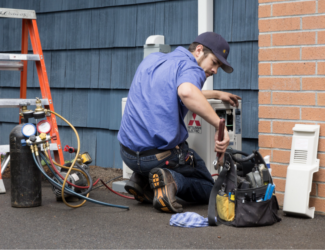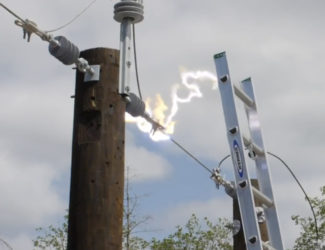
Winter bills
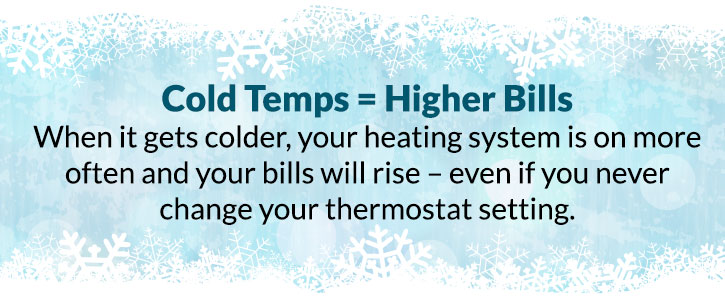
Did you know? A typical January energy bill can be DOUBLE OR MORE compared to a July bill.
Dialing down helps you save
Because we heat our homes more in the winter, energy bills will be higher. Take control to keep bills in check:
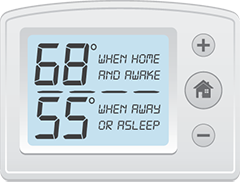
- Turn down your thermostat. We recommend 68° when you are home and awake and 55° when away or asleep.
- Check out our weatherization rebates and heating rebates for your home-efficiency projects in electrically heated homes.
- Income-qualified customers can qualify for bill assistance.
Research suggests 1-3% bill savings per degree change in a well-insulated home – thus dialing down 5 degrees could trim your bill up to 15%* *Over what you would pay if you did not nudge down the thermostat.
Cold weather can mean estimated meter reads. Learn more >
Winter heating
Heating bills rise when temperatures get colder. You not only use your heating system to keep your home warm, you also use it to maintain a certain temperature when you’re away so pipes don’t freeze and your home is comfortable when you return.
The greater the difference between the temperature outside and the thermostat setting inside a building, the harder the heating system will work and the more energy it will use, even if the thermostat isn’t set higher or the building is unoccupied for part of the day or night. Sometimes it’s not easy to know how hard your heating system is working because it usually sits in a garage, and you get used to hearing it turn on so you stop noticing it. If you set your heating to be at 68 degrees and the temperature outside is 30 degrees, your heating system is using more energy to maintain that 68 degrees than it would if the outside temperature was 40 degrees.
In the chart below, daily average temperatures in the winter are represented by the blue area. The orange area represents the amount of time your heating system is working to keep the temperature at 68 degrees. The more orange you see each day, the more your heating system is on, keeping the temperature setting to 68 degrees. This makes your energy bill higher.
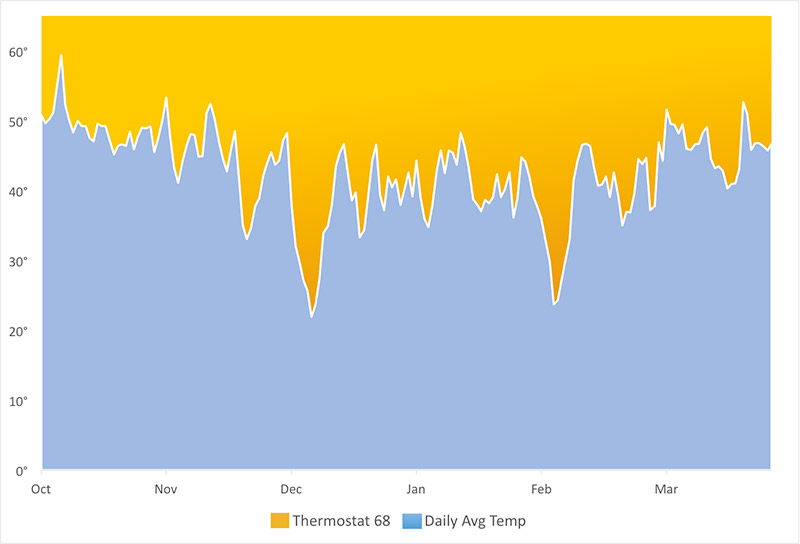
When the temperatures drop into the 30s, your heating system is working harder (using more energy) to keep your home heated even though the temperature setting of 68 degrees in the home hasn’t changed.




